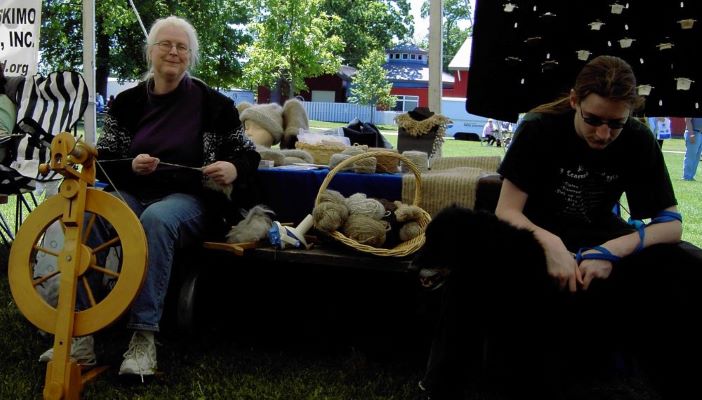Types of Dog Hair
There are three types of dog hair: whiskers, guard hairs, and undercoats. The single-coated dogs have whiskers and guard hairs.
It is referred to as dog hair because the term “dog fur” would imply a pelt like a mink coat is a pelt. The term “dog hair” is using the hair brushed off of the dog. NO DOGS are killed or injured. One just grooms a dog which is good hygiene for the dog!
The guard hair is thicker and much longer than undercoat hair. It is the level of the coat that is visible to the naked eye and is designed to prevent superficial injuries to the skin primarily and offering some insulation as a secondary function.
A double-coated dog has two layers: undercoat and guard hair as well as whiskers. The undercoat is the layer of the coat that lies closest to the skin. It is fluffy, downy, and grows in short clusters so as to provide insulation against the elements.
It is the undercoat that produces the soft luxurious yam. It should be collected by regularly brushing your dog, a task that most dogs enjoy.
Some dogs that have a single coat of silky hair will make a useable yarn when brushings are collected.
Clipped hair is generally undesirable due to the fact that the hair is too diverse in length to spin a nice yarn and can be very harsh due to the mixing of guard hairs with the undercoats.
Collecting the Dog Hair
For a nice yarn, collect the hair that has the longest length and softest feel. Avoid guard hairs, they will make the yarn harsher. The colors of the hairs from several dogs can be blended together or spun separately. Wool can be added to dog hair, but I prefer to spin it without adding wool.
Brushings of the dog’s undercoat with a slicker brush, are the most desirable for soft yarn. Routinely brush your dog and save the hair. Dispose of mats and debris. Spring shedding has fewer guard hairs and the softest fibers. Prime hair or the softest comes from the dog’s ruff, shoulders, back, and sides. The legs, breeches, and tail tend to have coarser hair. When storing dog hair, do not pack it tightly as this can cause it to become matted. Keep the hair in paper bags, a pillowcase, or in a cardboard box. Fill a bag only three-quarters full. Since dog hair is a protein fiber, moths may attack it just as they do wool, so be vigilant.
Clipped dog hair tends to make coarse, harsh, prickly yarn. Terriers who are stripped tend to have coarse hair which makes a yarn that is not suitable for garments but can be used for rugs or wall hangings. The hair from short hair dogs is rarely suitable for yarn.
Characteristics of Dog Hair Yarn
Dog hair yarn is very dense, heavy, nonelastic, and very warm. Because most dog hair is very short, it requires a lot of twists to hold it in place. To do this the yarn must be thin. To make thicker yarn it needs to be plied, several strands twisted together. When being spun, dog hair is smooth, slippery, and short compared to wool. Because of this, dog hair yarn is heavier than wool when comparing the same length of yarn. With use, it fuzzes up to form a halo.
The breed of dog you have, the texture of the hair, and the way the yarn is spun determines how your dog hair can be used. Dog hair can range from thin, soft, and fine to thick, coarse, and harsh.
The nicest yarn generally comes from dogs with two coats, especially the northern breeds such as Samoyed and Husky.
